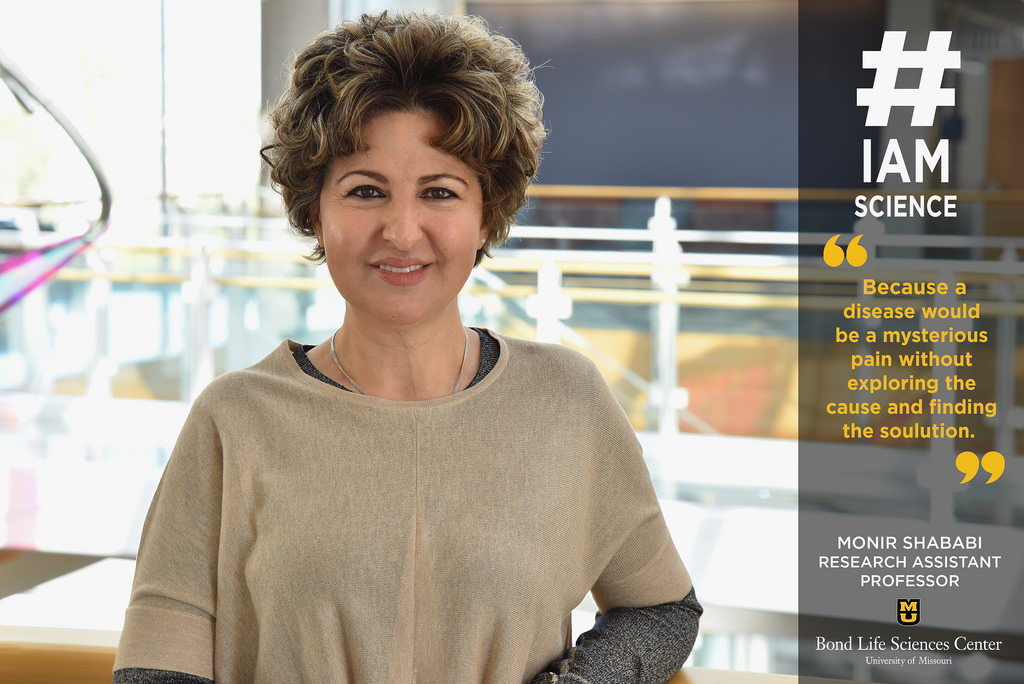Published on
By Erica Overfelt | Bond LSC
Research Assistant Professor Monir Shababi and mothers of SMARD children started out as friends on Facebook. Now, they’re friends for a lifetime.
It was an unexpected turn for someone who spends most of her professional life in a lab.
SMARD1 is an acronym for the rare genetic neuromuscular disease spinal muscular atrophy with respiratory distress, which has been the focus of Shababi’s research for the past five years. While it shares part of its name with the better known spinal muscular atrophy (SMA), the disease-causing gene is not the same. Both diseases target the lumbar motor neurons and cause muscle atrophy, diaphragmatic paralysis and respiratory complications are the first and most devastating symptom of SMARD.
“When my first paper about gene therapy for SMARD1 disease was published, a mother of the SMARD child contacted me and she informed other moms about my research,” Shababi said. “I never thought it would happen this way, you never imagine there would be a personal impact with your publications.”
Shababi ran into the obstacle of funding. Her once Facebook friends were there to help Shababi face this drawback.
“Within the second year of my National Institute of Health funding for SMARD1 gene therapy, I discussed the research with the mothers of SMARD kids, Jill Sims and Lisa Porter,” Shababi said. “I told them about the limited funding options in the future. Sims and Porter family were extremely supportive and generous. Dr. Sims and his wife (Jill’s in-laws) donated a large sum of money to Mizzou Give Direct, MU’s crowdfunding website exclusively for my SMARD research, establishing a webpage for donations with the goal of curing SMARD. Their gift changed the course of many lives in the most meaningful way.”
Shababi met the Sims daughter Catherine a few weeks ago. Catherine is five years old and lives with the disease.
“It had the most amazing personal impact on my work, which I was looking all along in my professional life,” Shababi said. “This is not just a job, it is not just research, it is not about publishing papers; it is affecting real lives.”
Shababi — who works with Dr. Chris Lorson at Bond LSC — began her life career in science at the University of Tabriz in Iran studying plant pathology. She moved to America with her husband, who accepted a research job in MU. She then got her masters and Ph.D. through the university, finishing her Ph.D. in Dr. James Schoelz lab studying gene regulation in a plant virus. She then had two postdoctoral positions working on gene regulation in yeast and bacteria.
“My postdoc research on yeast and bacteria was not satisfying enough; I wasn’t feeling the impact on the society that I was looking for,” Shababi said. “I even thought about changing careers until I contacted Dr. Lorson. His research involved hereditary genetic disease in humans and using virus as viral vectors to deliver the missing gene. I thought this research will surely have an impact on human lives. In Lorson’s lab, I found the enthusiasm and passion which led to four funded grants, 18 publications, a book chapter and most importantly, a financial gift to MU.”
Even if Shababi doesn’t get the expected results, every day in the lab is a new victory for her. She has developed a new mouse model for SMARD1 and injects them with the therapeutic virus at different times with different dosages to determine the therapeutic window and proper dosing for the vector. Shababi previously tested only black mice but now tests new white mice born with SMARD.
“As opposed to black mice, these white SMARD mice do not have the genetic modifiers to survive for a long period of time,” Shababi said. “They usually die by day 20, so we administer the gene replacement therapy at different days post birth or different dose and analyze the survival and overall health. Even a few days elongated survival is a huge improvement and you can tell if that time point or dose was still efficient or not.”
To move the research further toward clinical trials, the lab aims to use a more advanced model such as a human primate.
“We are hoping to advance from the mice research to an animal closer to humans,” Shababi said.
With hopeful new advancements in the future, there is only a positive outlook for the future of treatment.
“The pain and suffering of SMARD children and their parents are real and heartbreaking,” Shababi said. “This research builds a foundation for the future clinical trials creating optimism and hope for the SMARD community.”
